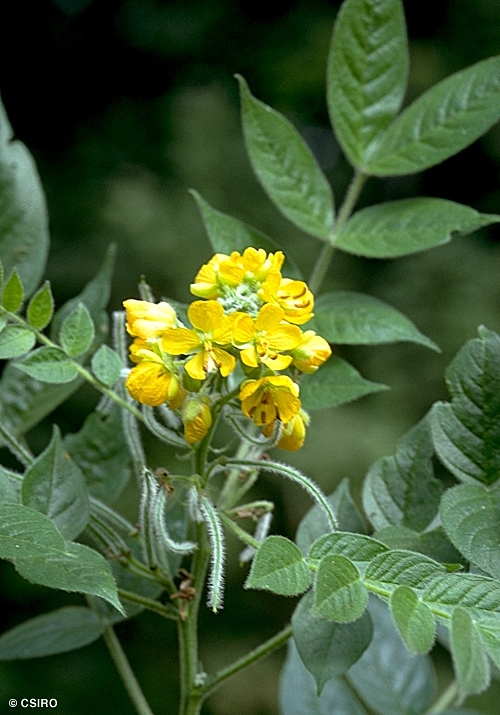Australian Tropical Rainforest Plants - Online edition
Senna hirsuta (L.) H.S.Irwin & Barneby




Irwin, H.S. & Barneby, R.C. (1979) Phytologia 44: 499.
Woolly Senna; Senna, Woolly
Usually flowers and fruits as a shrub about 2-3 m tall.
Stipules hairy, filiform, about 9-13 mm long, without any obvious venation. Leaflet blades about 40-110 x 15-45 mm, the terminal pair the largest. About eight leaflets per leaf. Twigs, compound leaf rhachis, petioles and leaflets clothed in long pale hairs. Compound leaf rhachis and petiole channelled on the upper surface. A domed gland present on the upper surface of the compound leaf petiole shortly above its junction with the twig. Twigs and leaves emit an obnoxious odour when crushed.
Cotyledons about 12-19 x 9-11 mm, petiole about 1 mm long. At the tenth leaf stage: compound leaves consist of four leaflets with ciliate margins. Terminal leaflets larger than the lower leaflets. Compound leaf rhachis grooved on the upper surface with a cigar-shaped gland present between the basal pair of leaflets. Leaves emit an unpleasant odour when crushed. Stipules linear, about 2-7 x 0.5 mm long, hairy. Seed germination time 6 to 74 days.
Unlikely to be palatable to stock; toxic to rats in laboratory tests. Leaves have been used for medicinal purposes in Java. Hacker (1990).





